According to world statistics, back pain ranks second on the list of causes of disability after viral infections. They are at the top of the list of hospital visits. Contrary to popular belief that mostly older people suffer from it, the younger generation often has back pain. Why your back hurts, what preventative measures should be taken to avoid it, and what practices help with the pain - these and other issues will be explored in this article.
Cause
Because the back is a fairly large area of the human body and a lot of vital organs (heart, lungs, intestines, kidneys) are projected onto it, there can be many causes for pain. They are especially localized in the lumbar region.

The main causes of back pain may be:
- Injuries to muscles and ligaments - overwork, sprain, cramps, hypothermia, bruising.
- Diseases of the spine - intervertebral disc herniation, scoliosis, osteochondrosis, arthrosis of faceted joints, pinched nerves, dislocation of the vertebrae, sciatica, lumbago.
- Diseases of internal organs: kidney, heart, gastrointestinal tract, pelvis.
In addition, pain in the back of the body is accompanied by a heart attack, a stroke.
Even minor but frequent back pain requires a doctor to prevent the development of a more serious illness. For example, movement of the vertebrae can further lead to osteochondrosis or hernia.
The risk group for back problems with painful feelings includes those who:
- sitting or standing (such as drivers; those working on computers);
- engage in high levels of physical activity;
- often experience stressful situations;
- train hard in the gyms;
- overweight;
- his posture is incorrect.
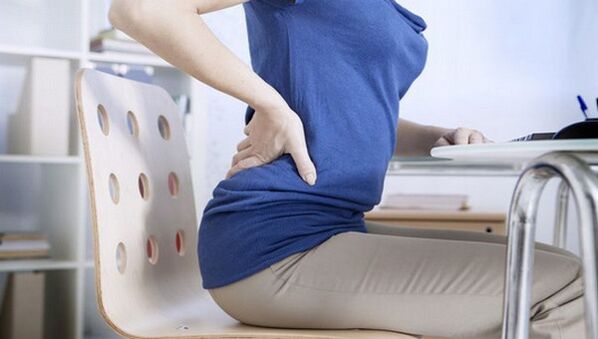
Symptoms
Unpleasant sensations can be localized in different parts of the back, but most often occur in the following parts of the body.
In the lower back. In the lumbar region, back pain is usually painful, obsessive, and can cause:
- intervertebral hernia;
- osteochondrosis;
- radiculitis;
- women's diseases;
- protrusion;
- kidney problems.
The pain can be given to the foot, it becomes stronger when sitting or walking. In this case, inflammation of the sciatic nerve may be the cause.
If a pregnant woman experiences such pain, she should have a serious spinal examination after the birth of the child:
- In the back of the head, turning into a headache.Attention may need to be paid to examining the cervical vertebrae. Neck problems are also indicated by pain in the neck and back at the same time. It feels when you turn and tilt your head.
- In the middle of the shoulder blade and spine.When inhaled and when a person turns on the torso, it can grow. The cause should be sought in the work of the heart and chest spine.
- Rear middle- Acute pain in the chest and heart. The probable cause is a problem with neuralgia or some internal organ.
- Between the shoulder blades.If the back between the shoulder blades is mild but obsessive, the causes are likely to be in the intercostal neuralgia, osteochondrosis, scoliosis, other problems with the spine, and diseases of the stomach, gallbladder, lungs, and liver.
- In the lower part of the trunk.If such pain is associated with acute and fever, it is similar to kidney colic or other diseases of the kidneys and urogenital system.

The most dangerous back pain is that that radiates to the chest region as it can indicate a heart attack. The most common is painful discomfort in the spine. Treating neck pain is the most problematic.
When to see a doctor
Back pain can occur after heavy lifting or sudden movement. They can be removed with a massage or special ointments. If the pain recurs or accompanies the person, you should see a doctor. The neurologist will help determine the causes. By properly identifying and eliminating the cause, you can get rid of back pain permanently.
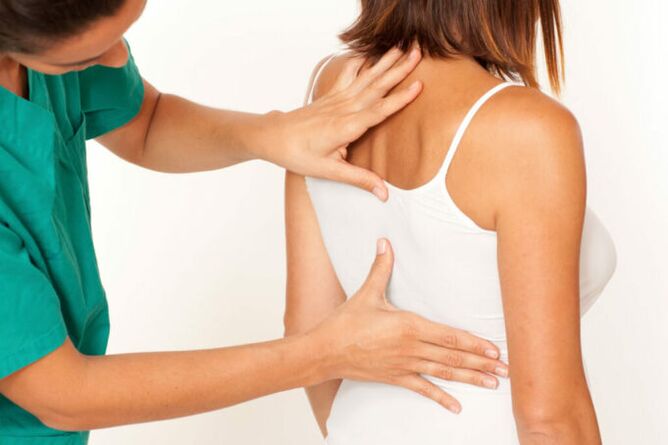
Premature treatment has serious consequences, all the way to surgery.
Do not delay your visit to the doctor if the pain:
- acute and does not stop for two to three days;
- permanent, which does not expire for two weeks;
- sharp for no reason;
- high fever, stomach cramps, painful chest discomfort, accompanied by respiratory complications;
- injects the foot;
- appeared after the injury.
It is absolutely and immediately necessary to call an ambulance if a person has difficulty moving, confusion or loss of consciousness, or shock.
Methods of diagnosing back pain
The specialist will help to determine the exact cause based on the results of the diagnosis, which will be performed using the following methods:
- ultrasound examination (ultrasound);
- magnetic resonance imaging (MRI);
- electrocardiogram (ECG);
- radiography;
- laboratory research.
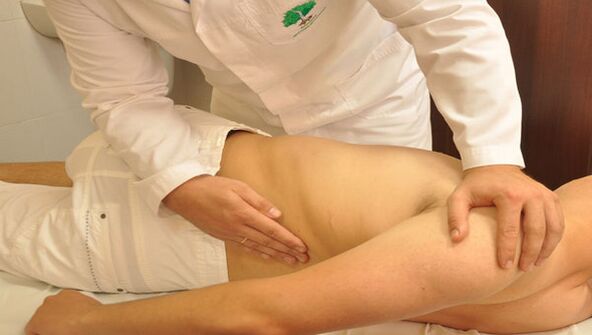
Treatment methods
Treatment methods can be broadly divided into traditional and non-traditional treatments. And medicinal, neurosurgical and conservative. Let's look at them in more detail.
Traditional
Medications are primarily aimed at relieving pain and inflammation and improving metabolic processes. Pain is relieved with the help of painkillers in the form of tablets, injections and drips.
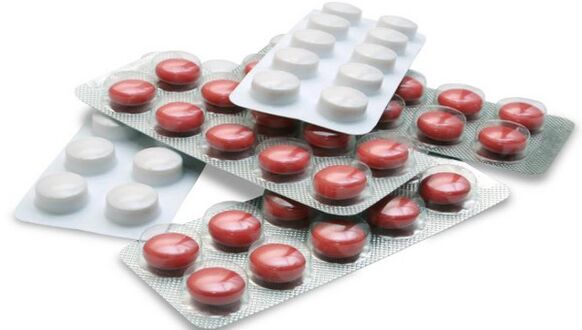
Vitamin C, B and immunomodulators are prescribed in the complex. In more severe cases, injections are given to help relieve pain and have an anti-inflammatory effect.
Physiotherapy procedures are mandatory for painful back pain associated with diseases of the spine, joints, nervous system and the consequences of injuries:
- laser therapy;
- ray of light;
- ultrasound;
- electrophoresis;
- ultraviolet;
- magnetic;
- infrared radiation;
- electromagnetic waves.
This includes sludge treatment.
Another traditional treatment is massage. Recommended:
- osteochondrosis;
- arthritis;
- arthrosis;
- radiculitis;
- heavy physical exertion;
- curvature of the spine,
- hernia.
In addition to relieving pain, massage also helps to improve posture, improve blood circulation, restore immunity, improve the functioning of internal organs, and relax the nervous system.
Statistics show that 50% of patients experience recurrent seizures or chronic illness after the first attack of back pain if they do not seek timely medical attention.
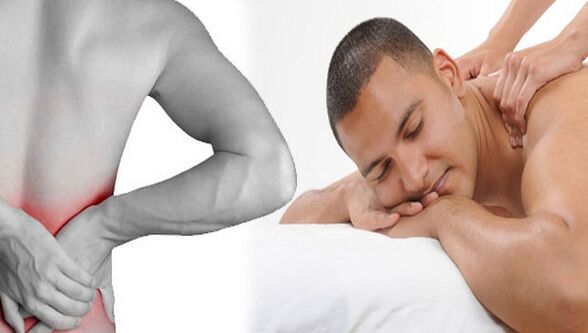
There are three types of massage:
- Classic (all massage techniques: caressing, caressing, rubbing, kneading, etc. ).
- Relaxing (stroking).
- Stain (using finger pads).
A complex of practical therapy has also been developed: in the case of severe problems, therapeutic gymnastics is performed under the supervision of a specialist. It starts with the usual lying position - so the patient fills more sessions. The loads then gradually increase, introducing simple but effective exercises for the spine: bending, twists, lifting the legs. Later, additional loads are introduced in the form of projectiles.
Physiotherapy, massage, and exercise are prescribed only after the patient is in pain. Otherwise, it may cause further damage.
It's not normal
The most famous non-traditional methods are acupuncture, manual therapy, hirudotherapy, vacuum therapy, kinesio taping (adhesive tape treatment) and others:
- Acupuncture (acupuncture) is recommended for spinal diseases, neuralgic problems, headaches, joint diseases. Not suitable for all people. Needle size, location, angle, and depth are determined individually for each patient.
- The chiropractor acts on the spine with his hand. You can adjust the cartilage discs, freeing pinched nerves, thus relieving pain. Manual therapy is recommended by the World Health Organization as a method of treatment.
- During the vacuum treatment, cups are placed on the back, under which pressure is created, causing blood to flow to the problem area. This allows for rapid pain relief and improved metabolic processes. Vacuum massage involves rearranging boxes from one place to another.
- Among the folk remedies, compresses, ointments and rubbing have proven to be good:
- Horseradish compresses are the most effective. Rub the horseradish, mix it with sour cream, spread it on the lower back, cover it with a napkin and wrap it around with a warm scarf. Horseradish leaves can be poured over boiling water and tied to the lower back.
- Low back pain can also be relieved by rubbing with a mixture of black radish and honey.
- Ointments containing iodine and lemon or birch oil are also used in equal parts along the entire length of the spine to relieve pain.
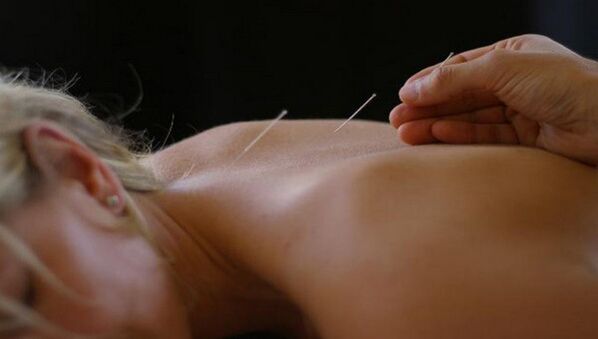
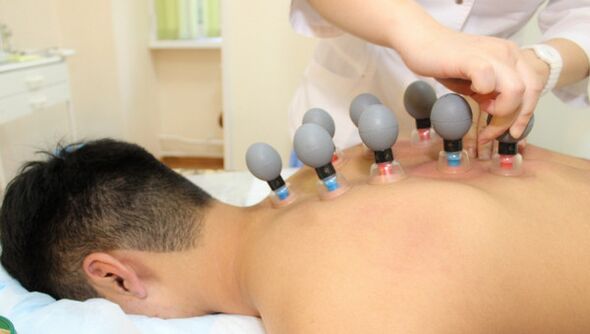
Prevention of back pain
If you enter the risk zone as a person whose spine is under constant stress due to the nature of the activity (hard physical work, sedentary work, footwork), you should do regular warm-up every day.
In addition, you should use the following tips:
- rest on a vertical surface - wall, column, etc. in a long standing position. ;
- distribute them evenly when carrying weights - it is better to use a backpack in both hands;
- bend your knees when lifting a heavy load off the floor;
- do not make sudden movements;
- observe posture, do not bend;
- maintain a normal body weight;
- perform gymnastics that involves bending and twisting the body;
- sleep on an orthopedic mattress;
- rule out sleeping on a high pillow.
The most accessible and effective methods of prevention are physical exercises to strengthen the back muscles, refusing to swim, lift and daily stairs, and walking.
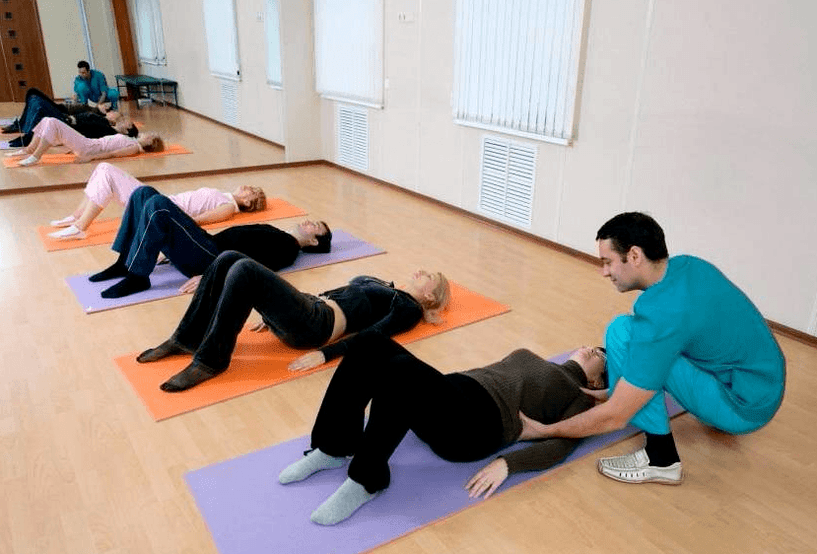
The simplest recommended exercises to strengthen your back muscles are:
- Hip bridge- in a supine position, bend your legs and lift your hips, lift your pool off the floor. The body should protrude in a straight line. Hold the tense hip in this position for a few seconds, then slowly return to the starting position. It is recommended to perform this exercise at least 12 times.
- Side planks- lying on your right side and leaning on your elbows, lift your body and stretch it in a straight line, lift your hips off the floor. Do the same on the left.
- Lunges- from a standing position, alternately advancing with his legs bent at a 90-degree angle. Recommended 10 times.
- Deflection in a supine position- Lie on your stomach, leaning on your hands, and pull your shoulders up as far as possible.
- The ball bounces- lying on your back, wrap your hands around your knees and pull them to your abdomen. Lie like this for 30 seconds. Then return to the starting position.
Fitball exercises are very effective for the back.
If you follow these recommendations, you should have no back problems throughout your life. If they occur, they should go to the hospital as soon as possible so that the health problem that has arisen starts in time without becoming chronic.






















